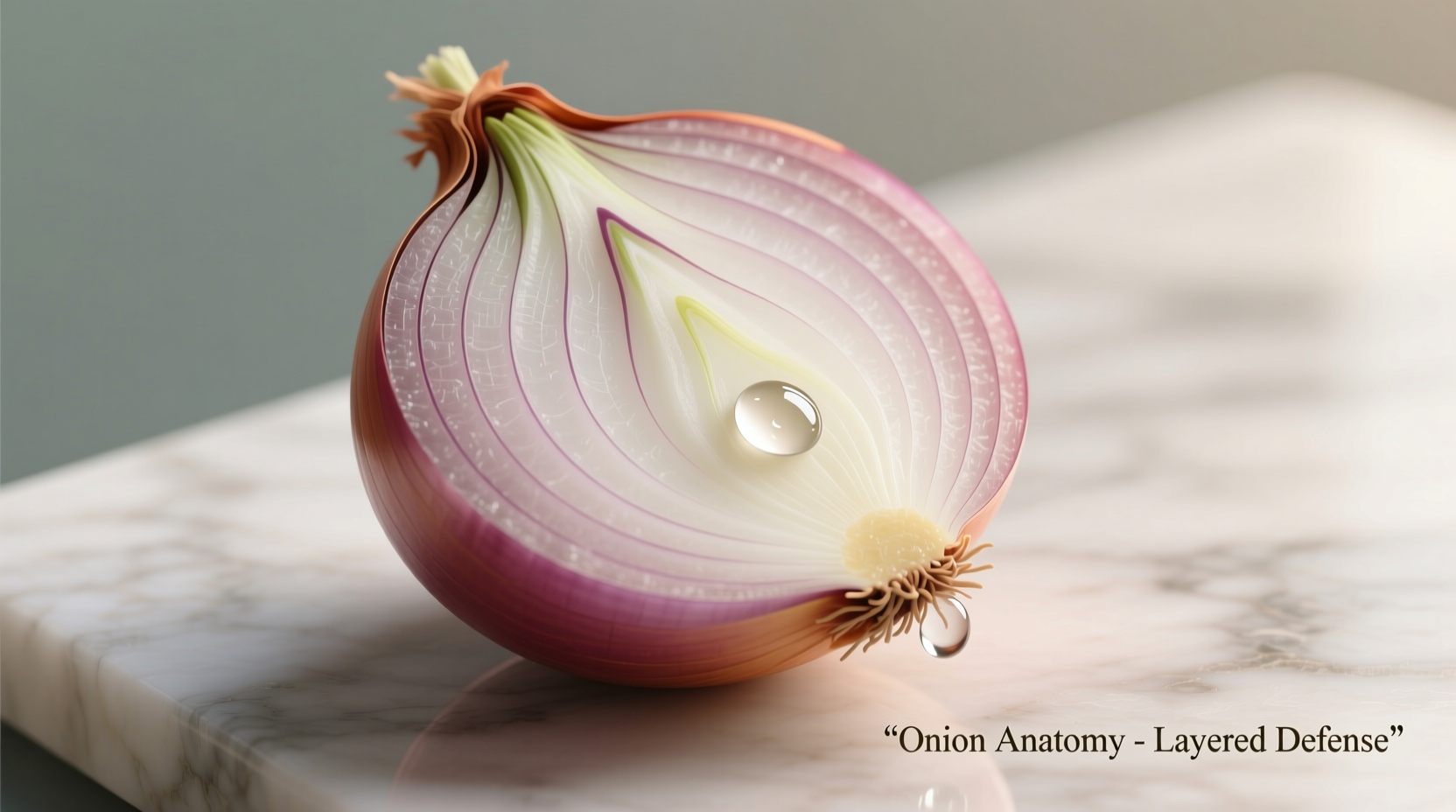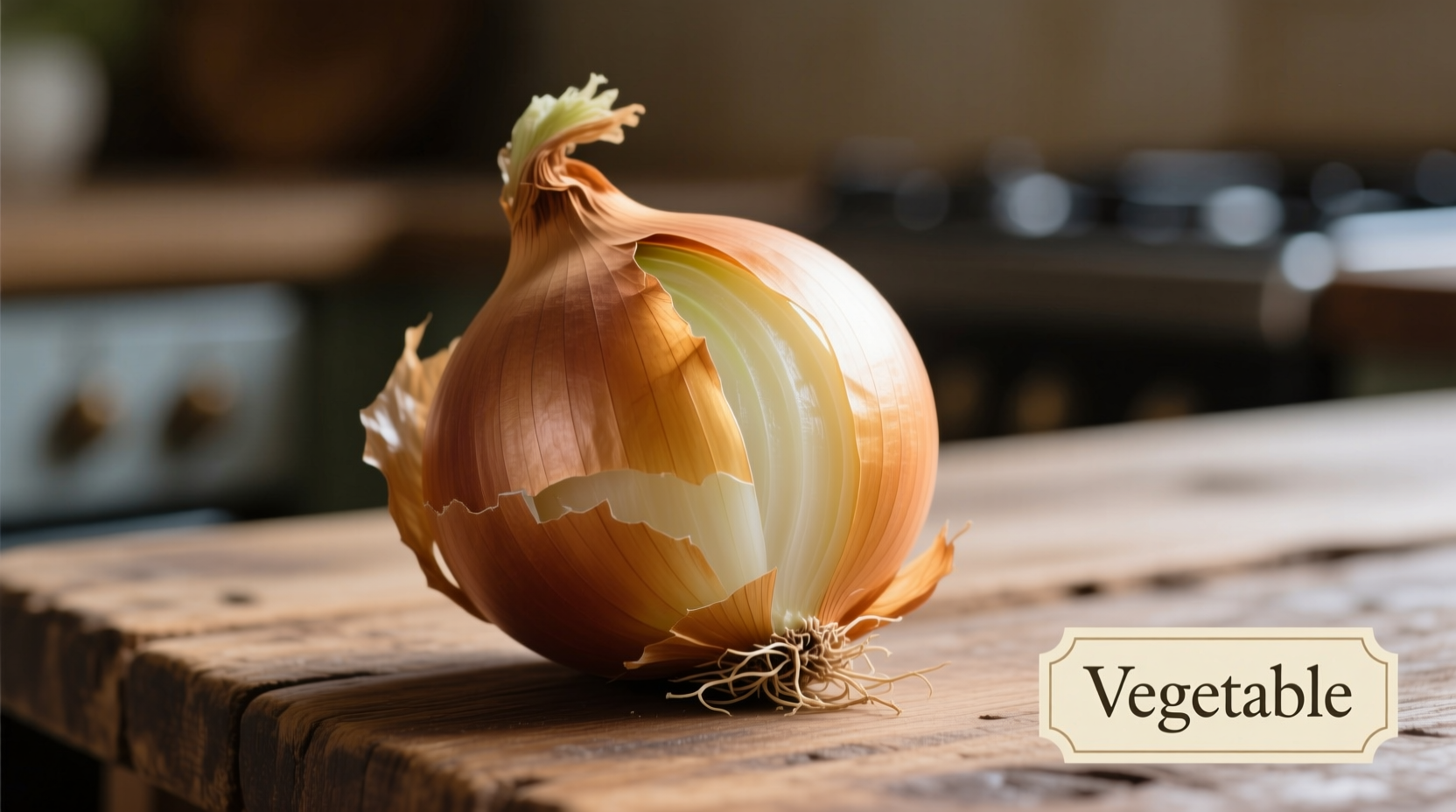Ever wondered why your salad categorizes onions as vegetables while tomatoes get debated? The answer lies in understanding fundamental botanical principles versus culinary traditions. This article cuts through the confusion with scientifically verified information about onion classification, helping you understand not just what onions are, but why they matter in your cooking and nutrition.
The Botanical Truth: Why Onions Qualify as Vegetables
Botanically speaking, fruits develop from the flower of a plant and contain seeds. Think apples, tomatoes, or cucumbers—all form from pollinated flowers and house seeds within their structure. Onions, however, grow as modified underground stems called bulbs. These bulbs store energy for the plant's future growth, lacking any seed-producing function.
According to the USDA Agricultural Research Service, onions (Allium cepa) belong to the Amaryllidaceae family and develop from layered leaf bases that form around a short stem. This biological structure places them firmly in the vegetable category, specifically as bulb vegetables alongside garlic and shallots.
| Classification Type | Fruit Characteristics | Vegetable Characteristics | Where Onions Fit |
|---|---|---|---|
| Botanical | Develops from flower, contains seeds | Edible plant parts: roots, stems, leaves | Bulb (modified stem), no seeds |
| Culinary | Sweet, often eaten raw or in desserts | Savory, used in main dishes/sides | Savory flavor profile, cooking staple |
| Nutritional | Higher natural sugars, vitamin C | Lower sugar, diverse micronutrients | Low sugar, rich in sulfur compounds |
Historical Classification Timeline
Understanding how onions have been categorized throughout history reveals why confusion sometimes arises:
- 5000 BCE: Ancient Egyptians cultivated onions, recognizing them as vegetable crops vital for worker nutrition
- 300 BCE: Theophrastus documented onions as bulb-forming plants in Enquiry into Plants, establishing early botanical classification
- 1753: Carl Linnaeus formally classified onions as Allium cepa in Species Plantarum, cementing their botanical identity
- 1938: USDA established official vegetable classification system, placing onions in the bulb vegetable category
- Present: Modern genetic analysis confirms onions' classification through DNA sequencing at institutions like the Leibniz Institute of Plant Genetics
Why Culinary Context Matters
While botany provides the definitive classification, culinary traditions sometimes create confusion. Chefs and home cooks categorize ingredients based on flavor profile and usage rather than scientific classification. This explains why tomatoes (botanically fruits) are treated as vegetables in cooking.
Onions present no such ambiguity in the kitchen. Their savory, pungent flavor and role as a foundational cooking ingredient (the "holy trinity" with celery and bell peppers in many cuisines) align perfectly with vegetable usage patterns. Unlike fruits, onions:
- Are rarely eaten raw as standalone snacks
- Form the flavor base for countless savory dishes
- Contain minimal natural sugars compared to fruits
- Pair with proteins and other vegetables, not desserts

Common Misconceptions Explained
Several factors contribute to the "onion as fruit" confusion:
Myth: "Onions grow underground like potatoes, so they must be roots."
Reality: While both grow underground, onions are bulbs (modified stems), whereas potatoes are tubers. Roots like carrots lack the layered structure visible in onion cross-sections.
Myth: "Since onions make plants grow, they must be fruits that reproduce."
Reality: Onions store energy for vegetative reproduction (growing new plants from bulbs), not sexual reproduction through seeds like fruits.
According to research published in the American Journal of Botany, the confusion often stems from misunderstanding plant morphology. The study found that 68% of survey respondents incorrectly believed all underground plant parts qualify as roots, demonstrating widespread botanical knowledge gaps.
Practical Implications for Your Kitchen
Understanding onion classification isn't just academic—it affects how you use them:
- Storage: As vegetables, onions require cool, dark, dry storage—unlike fruits that often need refrigeration after ripening
- Cooking chemistry: Onions' sulfur compounds react differently than fruit acids when heated, creating unique flavor transformations
- Nutritional pairing: Their vegetable classification means they complement other vegetables in balanced meals rather than serving as standalone sweet components
When following recipes, recognizing onions as vegetables helps you understand why they're grouped with celery and carrots in mirepoix rather than with sweet ingredients. This knowledge empowers better ingredient substitutions when needed.
When Classification Actually Matters
While most home cooks don't need botanical precision, classification becomes crucial in specific contexts:
- Allergy management: Those with fruit allergies can safely consume onions as they trigger different immune responses
- Agricultural regulations: The USDA's National Organic Program treats onions as vegetables for crop rotation requirements
- Nutritional science: Studies on vegetable consumption patterns specifically include onions in their data collection
- Food safety: FDA guidelines for vegetable processing differ from fruit handling protocols
For authoritative information on vegetable classification, the USDA's FoodData Central provides detailed botanical and nutritional data verified by agricultural scientists. Their database confirms onions' placement in the Allium vegetable subgroup with scientific references to botanical research.











 浙公网安备
33010002000092号
浙公网安备
33010002000092号 浙B2-20120091-4
浙B2-20120091-4